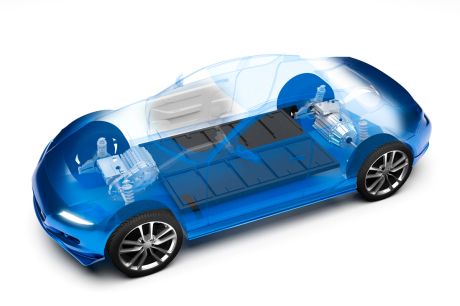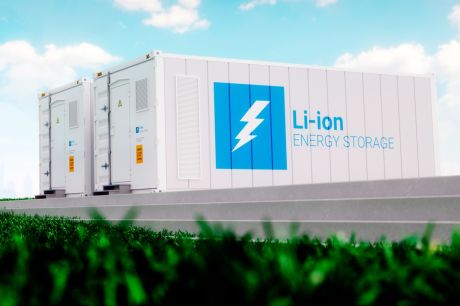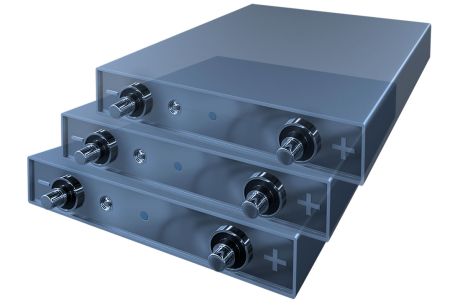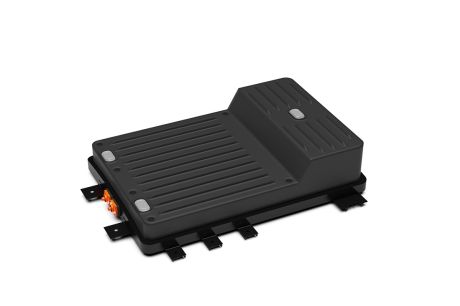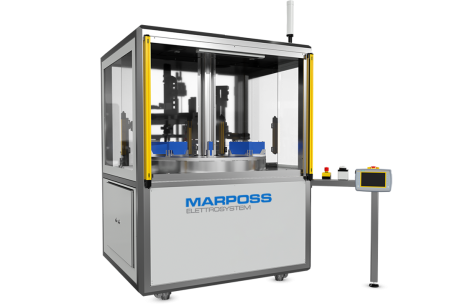Automatic Line for Prismatic Cells Electrical Testing (EOL)
Marposs offers its competences in measurement and testing, combined with its experience in automated implementations, as turnkey solutions for the evaluation of EV batteries. The portfolio of applications covers the entire production chain of cells, modules and packs. For battery cells, the expertise is mature from the empty case (Cell Begin of Line testing) to the final stage of the production flow (Cell End of Line testing).
These systems carry out the evaluation of the mechanical characteristics of the battery cells, using visual inspection devices or touch probes, and the measurement of the electrical characteristics, configurable according to the specific requirements of the customer.
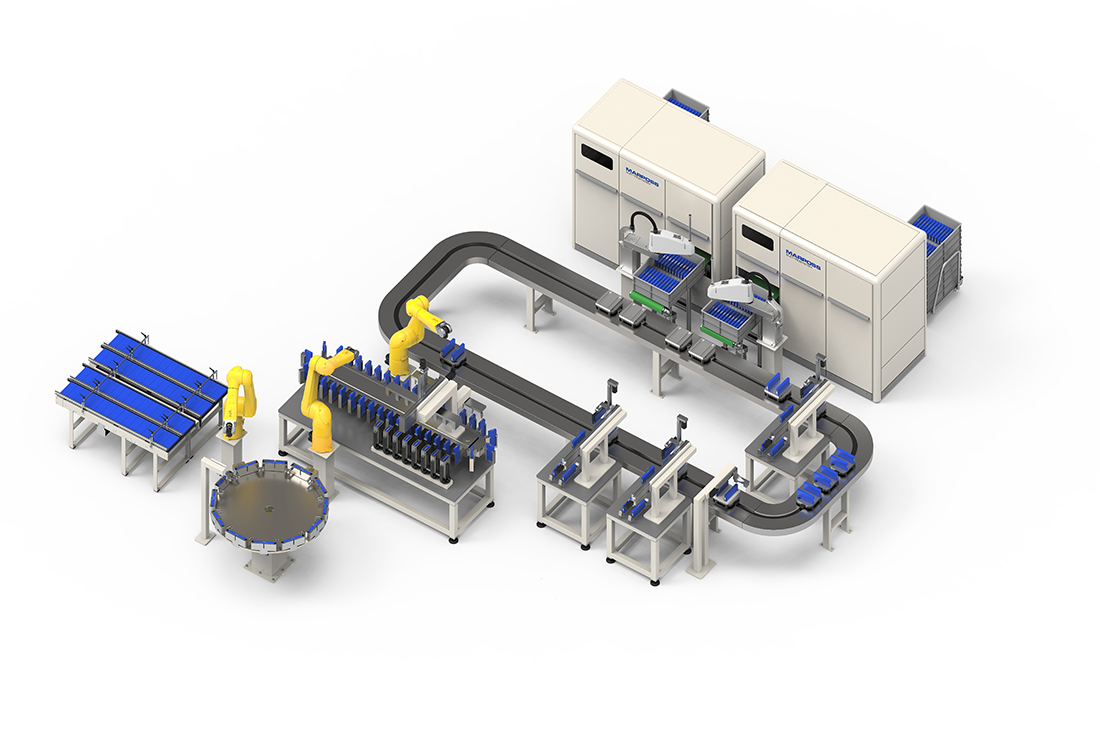
The fully automated machine described is an example of a plant designed to process activated prismatic cells with the electrodes positioned on the small and opposite sides.
The cells are fed by means of trays collected in stacked boxes stored in an automatic warehouse developed by Marposs. The automation separates each tray so that it can be handled by a robot whose task is to transfer the cells from the warehouse to the pallet conveyor. The required cycle time makes it necessary to have a certain number of warehouses and corresponding robots working in parallel.
The first inspection station consists of three benches equipped with camera systems to inspect each side of the cell casing and determine the orientation of the poles. The rejects are segregated; the good ones are placed back on the conveyor pallet with the correct pole orientation, to move on to the next station thanks to a servo-controlled Cartesian manipulator. The number of benches depends on the expected cycle time.
The second test station consists of a turntable with nests where the OCV/DCIR test is performed thanks to pogo-pin probes. One set of multiple cells is lifted at a time and surrounded by conductive foam to perform insulation tests on all the cells processed in parallel. A robot transfers the cells to and from the current station.
The third measuring station is dedicated to the evaluation of the thickness of the cells thanks to the application of a precise and preset pressure of the contact probes. The nests are distributed on the edge of a circular turntable.
Finally, the successfully inspected cells are sorted on conveyor belts and the rejects are removed. Again, a robot is used to handle the cells.
- Flexibility thanks to:
o A pallet conveyor used as a buffer and to bypass excluded stations
o Changeover of nests and moulds to different cell types
o Test parameters and mechanical and pneumatic characteristics that can be set as recipes
- Selectable tests and scalable solution to add more stations/tests or reduce throughput
- Reduced and adaptable footprint according to the specific layout of the assembly workshop
- Manual operations only for loading boxes (with special trolleys) and unloading tested cells
- E9066 PC integration for statistical control and control charts
- Manual parts handling
- Automatic parts handling
- Optional automatic storage for input cells
- Footprint of configuration shown (HxWxD): 2,500 x 9,000 x 9,000 mm
- Efficiency: 97
- Cycle time: depending on pulse duty cycle
